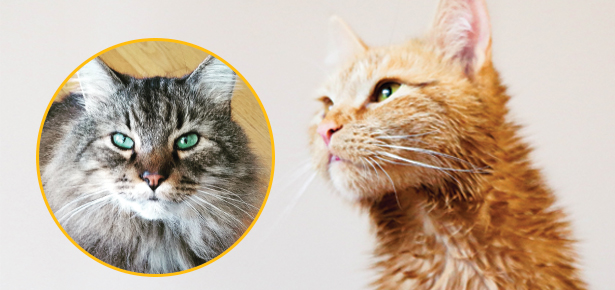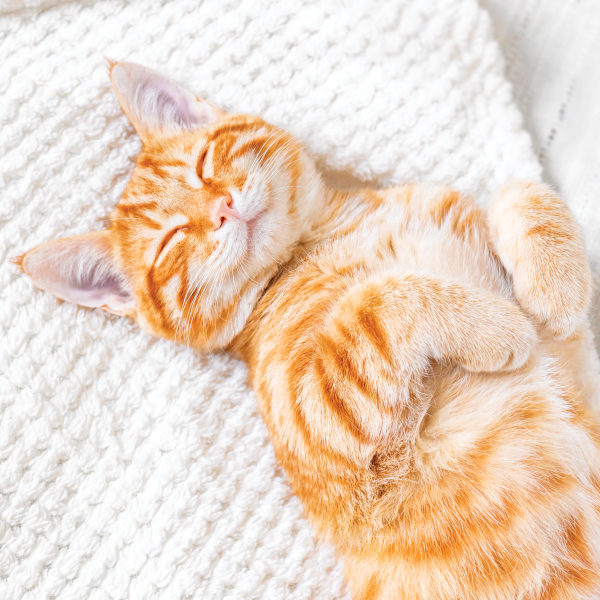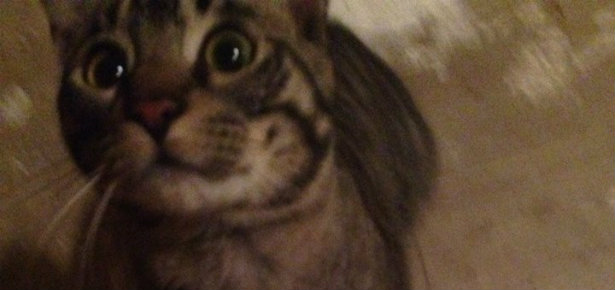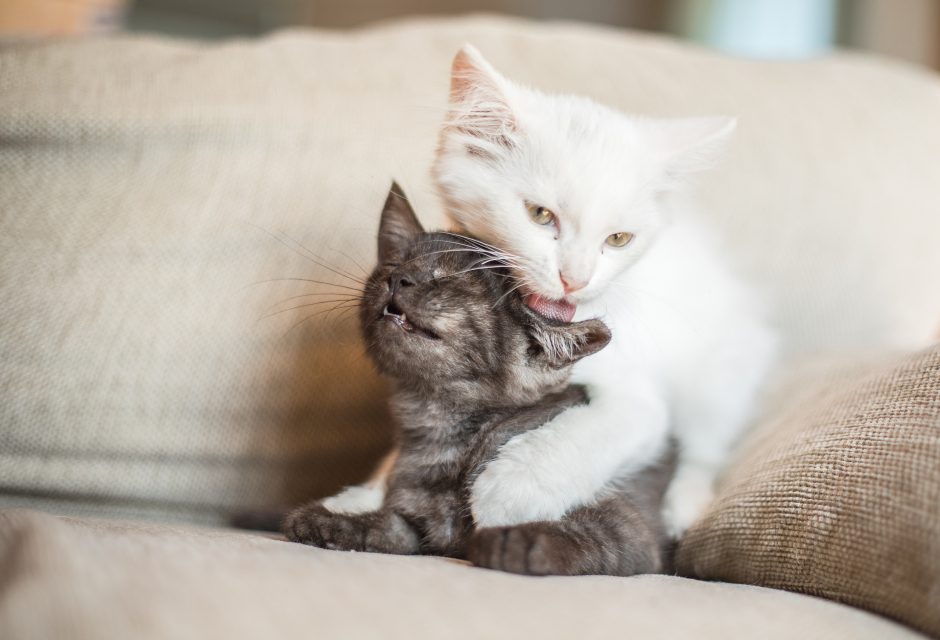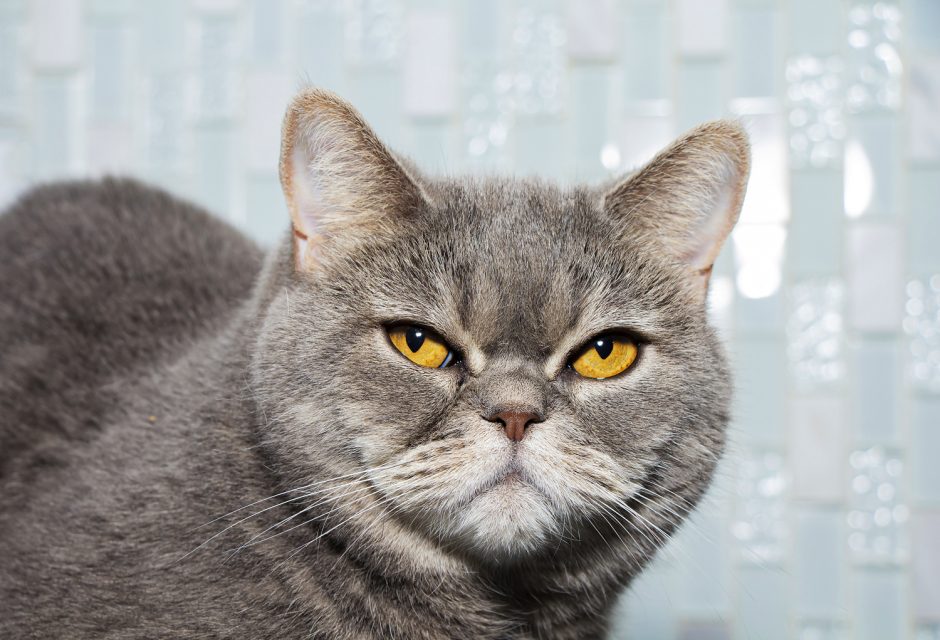

It’s All About The Mojo – Jackson Galaxy Interview
The Cat Daddy himself, Jackson Galaxy, on how to help your cats get their confidence back so they can live their bliss
Modern Cat Interview With Jackson Galaxy!
I’m not much of the star-struck type, but when I found out I’d be interviewing Jackson Galaxy, the coolest cat guy around, star of countless “Cat From Hell” interventions, and advocate for misunderstood cats everywhere, I had to rein in my inner fangirl. Can you blame me? I would be interviewing the Cat Daddy himself! And you know what? He lived up to all the hype. This man’s profound respect for and understanding of cats will make you a believer. Read on for Jackson Galaxy’s explanation of how to help your cat live his best life. Hint: it’s all about cat confidence.
IN ADDITION TO YOUR TV SHOWS, APPEARANCES, AND LECTURES, YOU’VE AUTHORED FOUR BOOKS ON CATS, YOUR NEWEST BEING TOTAL CAT MOJO. HOW ON EARTH DO YOU FIND THE TIME? AND WHAT EXACTLY IS “CAT MOJO”? The idea of mojo, in general, is that sort of indescribable confidence—not cockiness, but confidence—that comes from inside, where you feel like you don’t have anything to prove. You don’t have to inflate your chest and walk around and tell people who you are. You are at home.
SO A CAT WITH MOJO IS A CONFIDENT CAT THAT’S LIVING HIS OWN TRUTH? It’s that bumper sticker, “live your bliss,” but cats do that naturally. If they are encouraged, allowed to express that “mojo-tive,” it makes everyone’s life easier and the cats are a lot happier. That mojo comes from the connection that I call the raw cat. It’s the ancestral, the cat sitting there in Furball Crescent tens of thousands of years ago with a direct line into your cat. Allowing that connection to blossom is part of where mojo comes from.
AND IN DOING SO, ADDRESSING THE PROBLEMS THAT ARISE FROM CATS NOT BEING ALLOWED TO EXPRESS THEMSELVES? Exactly! This book is a long time coming because I was always really hesitant to put out sort of “Cats for Dummies,” you know. I didn’t want to just sit there and solve problems. What I wanted to do is really let you know where a lot of the problems come from in the first place. Where we start to go wrong is thinking that a cat is just like any other relationship
SO IS THAT WHAT PROMPTED YOU TO WRITE TOTAL CAT MOJO THEN, THAT YOU WERE SEEING THE SAME PROBLEMS COME UP OVER AND OVER AGAIN AND THE ROOT OF IT WAS A FUNDAMENTAL MISUNDERSTANDING OF THE CAT’S NEEDS AND ESSENCE? Yeah, I mean, there’s not a day that goes by—literally not a day goes by—that I don’t get stopped on the street; that I don’t have somebody recognize and start hitting me with what’s going on in their home. I realize that no matter what I’ve done, whether it’s my show, or the other books, or videos, or lectures, or whatever, there’s still a gap so I really just wanted to fill that gap. It’s about enriching the relationship. It’s about getting you on board with the fact that you don’t own your cat, you don’t have a cat—you are in a relationship. [And even then,] where we start to go wrong is thinking that a cat is just like any other relationship.
WHAT ARE THE TOP ISSUES THAT PEOPLE WANT YOUR HELP WITH? It’s blood and guts and pee and poop—that’s my job in a nutshell. It’s litter box issues and aggression—whether it’s aggression towards people and other cats, or other animals or children or boyfriends or girlfriends, whatever—it usually will boil down to insecurity and the frustration that comes from
that insecurity.
Litter box issues are like snowflakes, you know; they all come from the same cloud but they’re all sort of different. That’s why we spend so much time on problem-solving in the book. When it comes to cat on cat aggression, which is a big issue [and a big section of the book], it comes down to the proper reintroduction or introduction of two cats. It is so important to appreciate mojo when you’re talking about introducing another being into a cat’s world.
I really do believe that if it’s not a medical issue—that’s where you start solving any problem, is getting a clean bill of health—if it’s not medical or if it’s not a matter of physical discomfort or mental discomfort, which also requires sometimes some pharmaceutical intervention—beyond that it’s the mojo issue. It’s the confidence in their territory; it is territorial anxiety, and that’s why I spend the first chunk of the book on that, on the keys that unlock that confidence.
AN ISSUE WE FREQUENTLY HEAR IS, “MY CAT BITES RANDOMLY.” CAN YOU TOUCH UPON THAT? There are some of the obvious signs. All cats respond to overstimulation in different ways, but with that said, the tail is the place to start. So many cats use the tail as almost this sort of escape valve for the extra energy that’s being put into the body by you. And so they get to this point where’s there’s that twitch to the tail and that graduates to a sort of micro wag, and then you’re getting to the point where your cat’s tail is wagging, and at that point, you should have stepped away from the cat five minutes ago. They are letting you know through the only way they have, which is through their sympathetic nervous system, to show you that they are filling up like a balloon.
A lot of overstimulation is petting-induced. You’re sitting there sort of mindlessly petting or watching TV or whatever and suddenly you’re getting bit. The most you can do here is not freak out and not take it as this huge insult, which happens a lot, but back it up and see what was going on in that moment…what signs did I miss? Other than the tail, there are sometimes subtle signs that a cat is entering into that sort of reflexive fight or flight place: their ears start going back; that thing I call “back lightning” where the back starts to twitch a little bit; their tail starts to go; their eyes will begin to dilate—things like that, which are absolute, unmistakable signs of tension.
A lot of cats have tendencies towards petting-induced overstimulation. The first thing to remember is that it is the choice of their body not their minds. Of course, those things are tied together but it’s a physiological response. So the worst thing that you can do is come up with all kinds of crazy relationship-based reasons why your cat hates you and while you’re there spinning your wheels, you’re not realizing that it was a physical phenomenon that was happening. One of the sure ways of mitigating that is to stay away from the full body pet where you’re doing ear-to-tail over and over again. It becomes this unbearable sensation to a lot of cats. If you stick around the cheeks, around the forehead, and under the chin, you’re not going to over-stimulate your cat remotely as often.

Jackson Galaxy: When it comes to confident ownership of territory, you gotta remember cats create what I call signposts. Signposts are usually scent-soaked areas that cats will be able to go to during the course of the day. They smell themselves on it and they go, “that’s right I own this, movin’ on.” Soft beds are scent soakers; cat trees are scent soakers and scratching posts are scent soakers as cats put a visual and scent marker on those things. It is like a human walking through their house. You have framed pictures everywhere that remind you [of your] belonging in this life; that is what signposts are for cats. Now the litter box is the king of all scent soakers. That is where they mark; it’s not just a place to eliminate—it’s a place for your cat to identify a key part of her ownership of this territory. What we do then when we deep clean it is we flush it away, erasing all traces of signpost-ness. [Don’t] clean it to the point where you can’t smell anything.
WHAT DO YOU ADVISE INSTEAD? SCOOP THE LITTER BOX A COUPLE TIMES A DAY AND THEN LEAVE IT THE HECK ALONE?
Jackson Galaxy: Right, and then look, every month or every however often, then go ahead, wash it out. Don’t use bleach, don’t use vinegar, for God’s sake. You don’t have to clean it within an inch of its life. I have known clients that have done the deep cleaning twice a week. If you’re greatly offended, I mean recyclable plastic—get a new one after a certain amount of time. Make sure that your litter boxes are not just scent soakers but that there is enough of them to be signposts throughout the socially significant parts of the house.
SO HOW MANY PER CAT?
Jackson Galaxy: There’s that old formula: for every cat, you have a litter box plus one. [So 2 cats = three litter boxes] I think that works well as a guideline. I think it’s much more important to take look at where you are failing in the relationship compromise portion. And part of that is how many litter boxes do you have AND where do you have them? When it comes to the signpost part of the equation, you saying to me that you have three litter boxes but all of them are in the garage, in the mudroom or all three of them are behind the washing machine, That serves your purposes because you don’t want to look at a litter box but that does not serve a cat’s mojo purposes. Again, it’s about your willingness and where you’re willing to go.
HOW CAN PEOPLE TELL IF THEIR CAT HAS A MOJO ISSUE?
Jackson Galaxy: I break cats down to these three major categories. There is the Mojito Cat, the cat who is like the host of the party—you know, you knock on the door and they open it with a tray of drinks and say, “come on in, let me show you around.” There is the cat version of that—any human walks in and they’re head-butting you, wrapping themselves around your legs, and leading you into the house.
There is the Napoleon Cat, and that’s the over-owner. Because of a lack of mojo, lack of confidence, lack of this stability in their world, they will over-own things. Those are the cats that will end up perimeter marking, peeing on all of the walls and windows. Those are the cats that tend to pick fights with other cats even though they’ve sent the message time and time again, “I’m the boss of you.” [Even when response is,] “Okay, fine, you’re the boss of me,” the next day it’s, “Hey I’m the boss of you”—over and over because the root of it is that insecurity, that feeling down in their bones that I don’t own this.
And then the other side of the coin is the Wallflower. The Wallflower is the cat who has the same issue, the lack of the feeling of ownership of territory, but that does the opposite—they do their best to just disappear. If they could become like a cat-colored wall, they would do that. Or a wall-colored cat. I mean they’re just giving it up. One is taking it by force and one is totally abdicating.
SO WOULD YOU USE THE SAME APPROACH FOR BOTH OF THESE CATS?
Jackson Galaxy: At the heart of it, it’s the same approach. For instance, we connect to their ancestral purpose with [simulated] kill-eat. If we get the Napoleon cat in a daily session of play [“killing” toys] to eating, into grooming and sleeping and into starting again, and thus connecting them with their ancestor, then they own it. They don’t have to over-own because they gain that sense; where they “kill” something, they own that spot. That gives them that sense of ownership through doing the job that they have been put on this planet to do and also we get that spare static energy out of them at the same time. And with the Wallflower, same, they gain confidence because they realize their purpose. Living their bliss so to speak, we can draw them out of the closet, out from under the bed, into the middle of a room and they can learn how to connect with the play/prey drive in them and by that, gain confidence. It’s blood and guts and pee and poop—that’s my job in a nutshell.
WHAT DO YOU THINK IS THE NUMBER ONE MISUNDERSTANDING PEOPLE HAVE OF THEIR CAT’S NEEDS? WOULD YOU SAY THAT WOULD BE AN OWNERSHIP OF TERRITORY OR…?
Jackson Galaxy: Oh, I would say it’s much, much more basic. I think that we are in a large way guilty of looking at cats through dog-colored glasses. That we expect from cats what we expect from dogs, on a communicative level, on a relational level, on a way that we think they should serve us and they should be able to quote-unquote speak to us in the way dogs do, and we set ourselves up for great disappointment.
SO AT THE HEART YOU THINK IT’S A FUNDAMENTAL MISUNDERSTANDING OF THE CAT’S ESSENCE OR THE CAT’S CAT-NESS THEN.
Jackson Galaxy: Yeah, it’s the thought that, I mean, look, both dogs and cats have four legs and they both have fur, but past that it’s like apples and grapefruits, man. They are different animals. We took dogs out of the wild and immediately started turning them into this animal that can do jobs for us, that look to us for all the answers in the world. We did that. But with cats, they were literally along for the ride for thousands of years. They did a job, they did it incredibly well, and we were like alright, stick around; you keep us from dying from rat poop in our food, and we’re doing great together. So we didn’t bother changing them in any way and then suddenly we are angry at them for acting out in that way that only a hundred or 150 years ago was totally normal behavior. The difference is, we took them from the outside and put them in the inside and said: “now do things for me.”
SO WOULD YOU SAY THAT MAYBE THEN PEOPLE DON’T RECOGNIZE THAT, TO A LARGE EXTENT, CATS RETAIN THEIR WILDNESS, THEIR ANCESTRAL QUALITIES?
Jackson Galaxy: We are at a very interesting moment in our co-evolution with cats. Up until this moment, I really don’t consider cats to be fully domestic animals. I think that by treating them as such, we are not only setting them up for failure, but we are doing them a disservice. To a large degree…our desire to live with cats is to live with the wild. You know. But then we only take it so far and then we expect them to be domestic. And you can’t have both, you know.
If there’s one thing that I want you to come away from this book with, it’s thinking more about the relationship you are in than the cat you own. [In doing so,] you’re not just doing good by you and your cat, but you’re helping to spread an approach that, in my point of view will keep millions of cats from dying every year.
Join the newsletter and never miss out on cat content again!
"*" indicates required fields
By clicking the arrow, you agree to our web Terms of Use and Privacy & Cookie Policy. Easy unsubscribe links are provided in every email.





